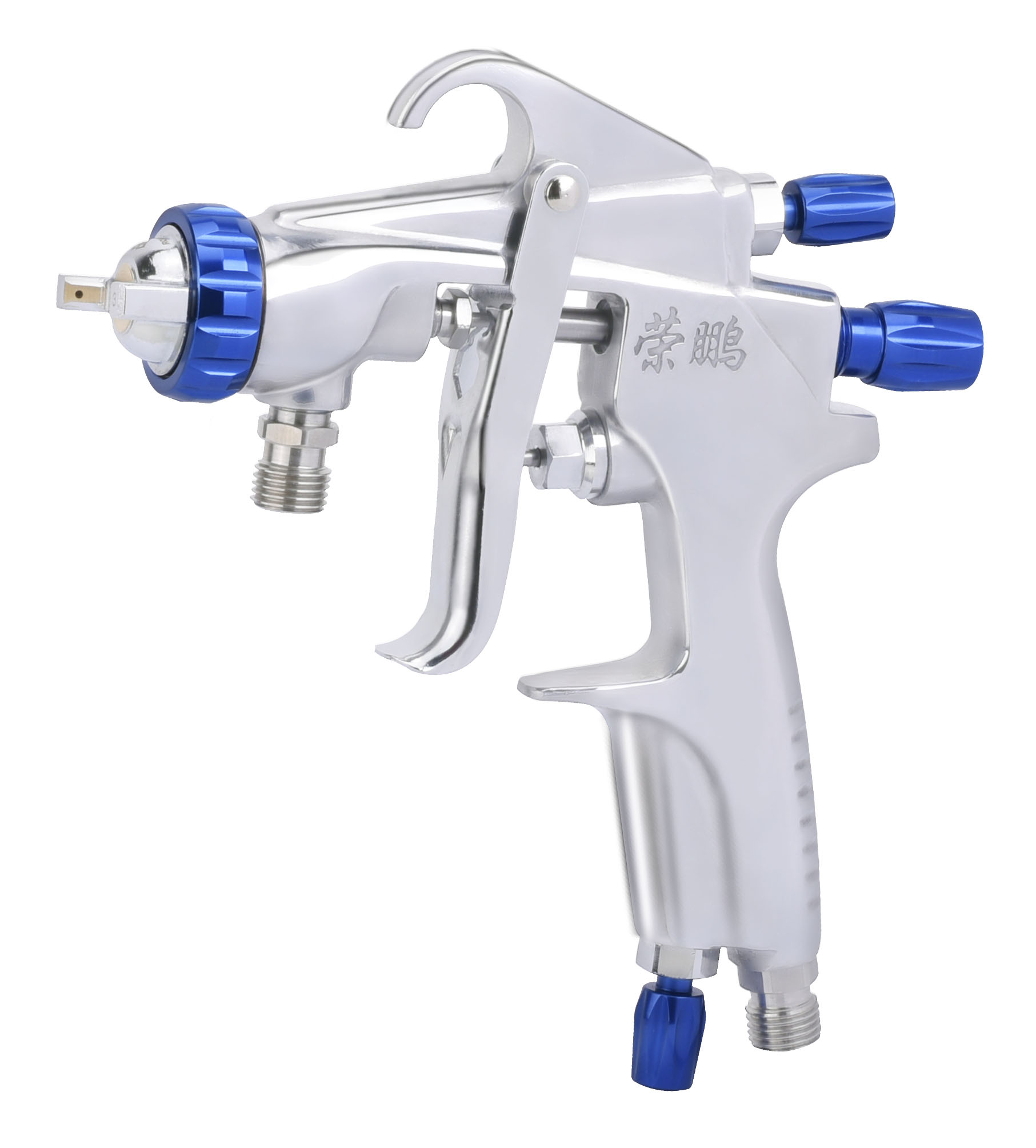

Forged Technology and Cast Technology on spray gun
With the upgrade of the company's
technology and the improvement of the company's manufacturing capacity, the
manufacturing of the pneumatic spray gun body of Zhejiang Rongpeng Air Tools
Co., Ltd. has been upgraded from the earliest casting process to the current
forging process. Rongpeng peoples have been working hard to bring airtightness
to everyone. The high-lever spray gun with better performance, finer
atomization effect and longer service life, then why the forged air spray gun
has such good performance, we can understand what is forging, what is casting,
Forged Metals vs Cast Metals
Forging and casting are two different
manufacturing processes used to manipulate the shape of metal. The casting
process involves heating the metal until it liquefies and then pouring it into
a mold to form the desired shape, while forging involves heating the metal
until it is malleable but still solid, then pressing or hammering it into a
specific shape.
The type of metal fabrication process you
choose for metal parts and assemblies will depend on the desired strength and
level of detail of the final product.
When to use forged metal parts
In general, if your component can be faked,
it should be. Unlike when metals are melted, forging maintains a tight grain
structure and a mechanically strong product without the use of expensive
alloys. According to a study conducted by the Department of Mechanical,
Industrial and Manufacturing Engineering at the University of Toledo, forged
parts have 26% higher tensile strength and 37% longer service life than cast
parts.
Forged metals are used for parts that need
to withstand high impact and mechanical forces, as well as high loads, stresses
and wear resistance.
Metal forging method
The most common metal forging methods are
open-die forging, closed-die forging, and roll forging.
Open die forging is used to produce larger
parts with simpler shape designs, such as rings, bars and hollows.
Closed die forging is used to produce small
metal products such as fittings, lifting and rigging hardware.
Roll forging is commonly used to produce
parts for the automotive industry, as well as hand tools and knives.
When to use cast metal parts
If your metal parts have many tiny details
or internal cavities, they can be difficult to shape during the forging
process. In these cases casting will allow the liquefied metal to flow easily
into small detail areas. Many metal manufacturers also recommend casting if the
part is too large to forge. However, the steel industry is capable of forging
parts up to 25,000 pounds.
Cast metal is used for parts with cavities
and small details, or parts that require a more difficult to forge alloy.
metal casting method
Modern metal casting falls into two broad
categories: expendable casting and non-expendable casting.
Single-use casting uses temporary,
non-reusable molds made of sand, loam, plastic, shells, plaster, or lost wax.
Non-consumable casting refers to molds that
can be reused, including permanent mold casting, die casting, semi-solid metal
casting, and centrifugal casting.
How to choose a metal fabrication method
When we know so much about forging and
casting, when we choose spray guns again, you will know why forged spray guns
are much more expensive than cast guns, because forging process requirements
are high, and the production of pneumatic spray guns The tightness is required,
the atomization is stable, and the life is long. When you buy two or more cast
pneumatic spray guns, in fact, you only need to buy one forged spray gun, which
can actually save a lot of money. If you Still not sure which metal fabrication
method produces the best spray gun for your project, ask the experts at
Zhejiang Rongpeng Air Tools Co., Ltd. We are one of the leading spray gun
manufacturing companies in China, serving agents and OEM customers in the
spraying industry in various countries. Our knowledgeable sales and technical
support teams will help you identify the various air guns for your market. Call
(86-576-82448401) or get a quote online.